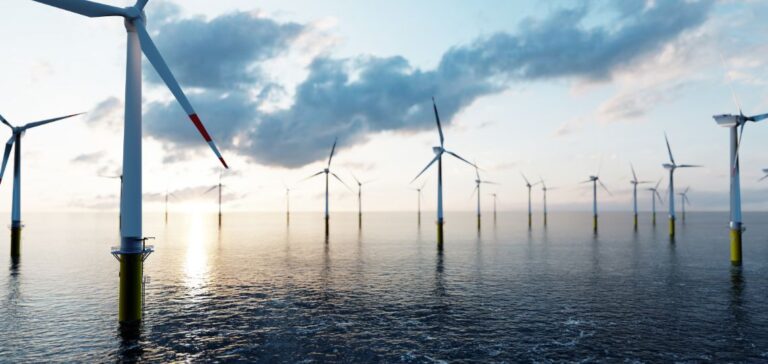The European Union registered the installation of 12.9 GW of new wind energy capacity in 2024, consisting of 10.3 GW of onshore wind and 2.6 GW of offshore wind. This allowed wind to account for approximately 19% of electricity production in Europe. However, to meet the EU’s energy transition goals, this pace must intensify. According to Wind Europe forecasts, approximately 140 GW of new capacity needs to be installed between 2025 and 2030, with an annual target of 23 GW. The EU aims to increase its total capacity to 351 GW by 2030, though this remains insufficient when considering the full decarbonisation target by 2050.
Wind Energy Capacity and Production
Wind energy has become a central pillar of electricity production in Europe. In 2024, it contributed to covering about 19% of Europe’s energy demand. This share must increase significantly for the EU to achieve its goal of 42.5% renewable energy in its gross final energy consumption by 2030, with a strengthened target of 45%. The implementation of incentivising measures and creating a conducive investment environment is crucial to maintaining this momentum, especially as clean energy demand grows rapidly.
EU Offshore Wind Targets
The EU has also made strong commitments regarding offshore wind. The revision of the Regulation on Trans-European Networks for Energy (RTE-E) introduces offshore capacity targets for member states, setting interim goals for 2030 and 2040, with a global target of 86 to 89 GW by 2030. Deploying such offshore capacity is seen as essential for ensuring Europe’s energy transition while strengthening grid resilience.
European Initiatives Supporting the Wind Sector
The REPowerEU plan, adopted in 2022, focuses on accelerating renewable energy investments to reduce Europe’s dependence on fossil fuels. This plan has led to a significant increase in installed wind and solar capacities, reaching 78 GW of new capacity in 2024. EU funding programmes, such as Horizon Europe and LIFE, have supported numerous projects in wind energy, particularly in cross-border infrastructure. Furthermore, in 2023, the European Commission introduced the “Wind Power Package” to accelerate wind energy deployment by simplifying permitting procedures, facilitating access to finance, and improving auction designs for renewables.
Impact on Employment and Competitiveness
The renewable energy sector, including wind, has experienced notable employment growth in Europe. In 2020, approximately 1.3 million people were employed in the renewable energy sector. This figure reached 1.8 million in 2023 and is expected to continue growing. Wind energy alone could generate up to 936,000 new jobs by 2030. Moreover, recent technological advancements, such as more efficient wind turbines, have helped make wind energy more competitive compared to other energy sources, providing further growth potential for the European economy.






















